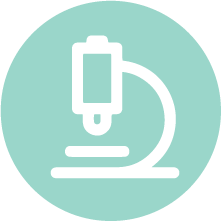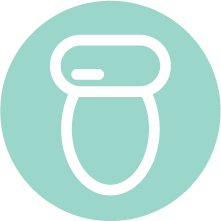Center for Outbreak Preparedness Insights
Local Public Health Resources Index (LPHRI)
Public health systems are essential to effective outbreak preparedness and response. Having adequate resources is a foundational element of preparedness. While state and federal public health agencies also play critical roles in preparedness, local communities, often led by local health departments, are frequently the frontline of outbreak detection and response. That is one reason why assessing resources at the county or local health department level is essential to understanding on the ground preparedness in the United States.
Heluna Health researchers have developed a novel tool to compare key public health resources at the local level, starting in the Western United States, specifically among local jurisdictions in Arizona, California, Idaho, Nevada, Oregon, Utah, and Washington. The tool is organized in four domains:
Exploring local-level preparedness in these states, users can view domain scores and 12 individual indicators, such as public health epidemiology staffing levels, adoption of wastewater surveillance technologies, or per capita public health expenditures. Where data are available, LPHRI provides a score for the most recent available time period. The scores indicate where each county or local health jurisdiction ranks in relation to all other counties/jurisdictions in the tool. For some states, we additionally present data for an earlier time period, so users can see if there have been any changes in relative resource levels over time.

DASHBOARD
KEY TAKEAWAYS
- California and Oregon had the highest per capita expenditures on average, but they also had the greatest variability in expenditures across local health jurisdictions. Notably, Oregon is home to both the LHJ with the highest per capita expenditures and the lowest per capita expenditures among the LHJs that reported their expenditures publicly.
- Public health workforce per capita staffing levels varied widely by state and type of staffing. Idaho and Nevada did not report any staffing data, and Utah had the highest median per capita staffing in five of the six staffing levels we reported. Additionally, nursing, community health worker, and environment health categories had higher per capita staffing levels overall than epidemiology, laboratory, and public health emergency preparedness staffing.
- Oregon ranked first or second in staffing levels for clinical laboratory technicians and technologists, pharmacists, and phlebotomists, but for all other states, the staffing level rankings varied widely across these three areas.
- Only 43.7% of the counties reported on wastewater surveillance. Of those with available data, wastewater surveillance testing was conducted at least 20 days per month on average. Wastewater surveillance adoption was uneven: while 49% of counties reported no testing being done in 2023, approximately 4 in 10 counties reported conducting wastewater surveillance testing an average of more than 340 days each year in 2023.
KEY TAKEAWAYS
- California and Oregon had the highest per capita expenditures on average, but they also had the greatest variability in expenditures across local health jurisdictions. Notably, Oregon is home to both the LHJ with the highest per capita expenditures and the lowest per capita expenditures among the LHJs that reported their expenditures publicly.
- Public health workforce per capita staffing levels varied widely by state and type of staffing. Idaho and Nevada did not report any staffing data, and Utah had the highest median per capita staffing in five of the six staffing levels we reported. Additionally, nursing, community health worker, and environment health categories had higher per capita staffing levels overall than epidemiology, laboratory, and public health emergency preparedness staffing.
- Oregon ranked first or second in staffing levels for clinical laboratory technicians and technologists, pharmacists, and phlebotomists, but for all other states, the staffing level rankings varied widely across these three areas.
- Only 43.7% of the counties reported on wastewater surveillance. Of those with available data, wastewater surveillance testing was conducted at least 20 days per month on average. Wastewater surveillance adoption was uneven: while 49% of counties reported no testing being done in 2023, approximately 4 in 10 counties reported conducting wastewater surveillance testing an average of more than 340 days each year in 2023.
The LPHRI provides a unique opportunity to compare resource levels across local jurisdictions, which may be used to inform program planning decisions. For example, the public health workforce data could help planners identify nearby jurisdictions with higher staffing levels that could assist during an emergency, such as through a memorandum of understanding. Data on expenditure levels could also provide insights into overall public health investment trends across different geographies or health department sizes.
While the tool displays local resource levels relative to the other jurisdictions across these states, it does not assess capabilities of those resources, such as whether the staff available have the appropriate training to perform the duties effectively. Additionally, since no widely accepted “standards” for optimal resource levels exist, the LPHRI cannot be used to draw conclusions about optimal resource levels. More research is needed to explore population health outcomes in relation to resource levels. Finally, the LPHRI is not meant to predict where outbreaks will occur or what health outcomes may result. For example, in correlation analyses, we did not find an association between the domain scores and certain health outcomes, such as influenza vaccination rates or age-adjusted premature mortality. Despite these caveats, the LPHRI is a valuable tool that allows public health leaders to access data for resource comparisons at the local level.
The dashboard above allows users to explore the data in the LPHRI, which can be displayed by county or by local health department. For a complete description of the methods and data sources used to develop the index, the Technical Notes are available below.

METHODOLOGY
The LPHRI is organized based on key categories of public health resources that are foundational to preparedness activities at the local level. Domains and indicators were selected and organized based on information from the scientific literature and feedback from technical advisors. Using data compiled from several publicly available sources, we applied statistical methods to aggregate the indicators into domains and conducted analysis on the data. For more details on the methods data sources used to develop the LPHRI, please see the Technical Notes available below.





